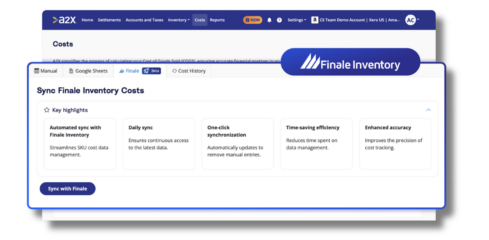Effective inventory management is key to the success and profitability of any restaurant. From minimizing waste to ensuring adequate stock levels, inventory management plays a significant role in streamlining restaurant operations. This guide highlights the importance of inventory management in restaurants and outlines strategies to enhance your inventory management processes.
Understanding the Importance of Inventory Management in Restaurants
Inventory management involves more than just tracking ingredients and supplies; it impacts profitability directly. By managing inventory effectively, you can reduce waste, prevent stockouts, and boost your bottom line.
A systematic approach to inventory management includes tracking and controlling the flow of goods from suppliers to the kitchen and ultimately to customers. This requires meticulous record-keeping, regular audits, and the use of technology such as inventory management software to streamline processes and enhance accuracy.
The Role of Inventory Management in Profit Maximization
Inventory management affects profitability by ensuring you have the right amount of inventory at all times. Optimizing stock levels prevents overstocking, which ties up unnecessary capital, and understocking, which results in lost sales opportunities. Effective inventory management also helps identify and eliminate slow-moving or obsolete items, reducing carrying costs.
Strategic inventory management can improve supplier relationships and negotiation power. A clear understanding of inventory needs and consumption patterns allows for favorable supplier terms, bulk purchase discounts, and beneficial partnerships that contribute to cost savings.
Reducing Waste Through Effective Inventory Management
Waste significantly impacts a restaurant’s profitability. Effective inventory management minimizes waste by accurately forecasting demand, monitoring expiration dates, and using a first-in-first-out (FIFO) inventory rotation to reduce food spoilage. Proper portion control and monitoring also help minimize waste during preparation and service.
Efficient inventory practices can enhance food safety and regulatory compliance. Maintaining detailed records of inventory movements, temperatures, and storage conditions helps ensure proper handling and storage of food items, reducing contamination risks and foodborne illnesses. Compliance with food safety standards protects customer health and the establishment’s reputation.
Key Elements of Restaurant Inventory Management
Successful restaurant inventory management includes several key elements that work together to optimize operations.
One important aspect is having a defined system for categorizing and organizing inventory. Classifying items based on type, usage frequency, and shelf life helps implement targeted stock control measures and reduces waste. This structured approach also facilitates inventory audits and simplifies identifying slow-moving or obsolete items.
Stock Control and Its Impact on Restaurant Operations
Stock control involves accurately tracking and managing inventory levels to ensure sufficient availability while avoiding excess. Effective stock control prevents stockouts, reduces overordering risks, and streamlines the purchasing process.
A critical component of stock control is implementing a first-in, first-out (FIFO) approach. This method ensures older stock is used or sold before newer stock, reducing spoilage and minimizing the impact of ingredient price fluctuations. Adhering to FIFO principles maintains product quality, minimizes waste, and enhances cost efficiency.
The Significance of Supplier Management
Building strong relationships with suppliers is vital for efficient inventory management. Effective communication and negotiation help ensure timely deliveries, access to quality products, and potentially better pricing. Regularly evaluating suppliers’ performance ensures they meet standards and contribute to inventory management goals.
Diversifying the supplier base can provide resilience against supply chain disruptions. Cultivating relationships with multiple suppliers for key ingredients mitigates risks such as price fluctuations, quality inconsistencies, or delivery delays. This strategic approach not only safeguards against potential disruptions but also opens opportunities for new products and competitive pricing.
Implementing Technology in Inventory Management
Technological advancements offer tools that can transform inventory management processes.
Integrating technology into inventory management enhances efficiency, reduces costs, and improves accuracy. Leveraging the latest innovations helps businesses optimize inventory control strategies and stay ahead of the competition.
The Rise of Inventory Management Software
Specialized inventory management software streamlines tracking, ordering, and reporting tasks. Features such as real-time inventory updates, automated reorder points, and comprehensive analytics provide valuable insights into inventory performance.
Inventory management software helps forecast demand, track expiration dates, and monitor stock levels across multiple locations. This detailed information empowers decision-makers to make choices that drive profitability and customer satisfaction.
How Automation Can Improve Inventory Accuracy
Automation enhances inventory accuracy by integrating inventory management software with other systems like point-of-sale (POS). Barcode scanning and automated data entry reduce manual errors, saving time and improving efficiency.
Automation also supports just-in-time inventory practices, minimizing excess stock and reducing storage costs. Automating routine tasks and setting alerts for low inventory levels helps businesses operate smoothly and respond promptly to market changes.
Best Practices for Restaurant Inventory Management
Implementing best practices is vital for an efficient inventory management system.
Understanding inventory turnover—how quickly a restaurant uses up its inventory—is crucial. Analyzing turnover rates helps make informed decisions about ordering quantities and menu offerings to optimize profitability.
Regular Auditing and Its Benefits
Conducting regular inventory audits identifies discrepancies, tracks variances, and deters theft. Reconciling physical counts with inventory management data helps pinpoint issues and take corrective action. Auditing also provides data for forecasting, demand planning, and refining inventory processes.
Establishing clear par levels for each item—minimum quantities to meet customer demand—helps prevent stockouts, reduce waste, and ensure consistent service.
The Role of Employee Training in Inventory Management
Training staff on inventory control procedures, accurate data entry, and proper handling is crucial. Educated staff reduce errors and improve efficiency, creating a culture of accountability where employees understand and contribute to inventory management.
Leveraging technology enhances inventory practices. Integrating inventory management software with point-of-sale systems streamlines ordering, tracks usage patterns, and generates real-time reports for informed decision-making. Embracing technology solutions automates tasks, reduces errors, and provides insights into inventory operations.
Overcoming Common Challenges in Restaurant Inventory Management
Restaurants often face challenges in inventory management, even with effective strategies.
Forecasting demand accurately can be difficult with fluctuating customer preferences and seasonal variations. Inventory management software with forecasting tools based on historical data and market trends helps optimize inventory levels and reduce overstocking or understocking.
Dealing with Inventory Shrinkage
Inventory shrinkage—includes theft, spoilage, and administrative errors—impacts the bottom line. Implementing security measures such as surveillance systems, access controls, and employee checks helps address shrinkage issues. Regularly reviewing inventory data helps identify and resolve problems promptly.
Managing Inventory Turnover Rate
Managing inventory turnover rate, which measures how quickly inventory is used, is crucial to prevent overstocking or understocking. Analyze historical data, monitor trends, and adjust ordering quantities to balance turnover rate and enhance efficiency.
Accurate tracking of perishable items is another challenge. With limited shelf lives, improper tracking can lead to waste and financial losses. Implementing a first-in, first-out (FIFO) system ensures older items are used first, reducing spoilage and optimizing turnover.
Effective inventory management is vital for restaurant success. Understanding its importance, implementing key strategies, and leveraging technology helps optimize processes, minimize waste, and enhance operational efficiency.
Transform Your Inventory with Finale
Request a Free consultation (valued at $2,500) to address your inventory management challenges with Finale Inventory and experience the benefits it can bring to your business.






